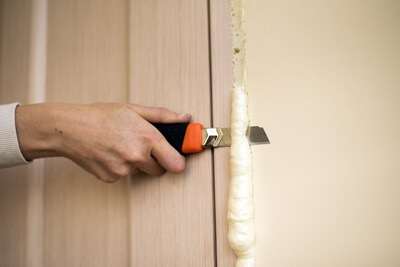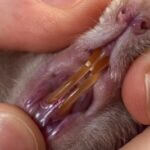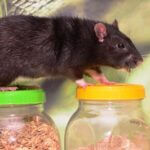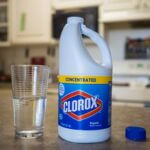Rats are invasive and persistent, able to sneak into the tiniest of holes and build nests in walls, attics, basements, and ceilings. Some rats even feed on insulation, making the structure of your home ideal.
Many homeowners consider expanding foam to keep out rats and safeguard the structure of their homes. This material is easy to spray into small gaps and holes, barring entry to rats. Depending on the type, it can also replace insulation and make it harder for rats to use the home as a food source.
Does Expanding Foam Stop Rats?
According to the University of Liverpool, rats have advanced jaws, giving them the strongest bite force of all small animals. With a ranking on the Mohs hardness scale of 5.5, they can chew materials like:
- Wood
- Plastic
- Polyvinyl chloride (PVC)
- Cotton
- Aluminum
- Iron
- Copper
- Cinder blocks
- Bricks
- Glass
That can make the expanding foam look like a poor method of keeping rats out of your home. After all, if bricks and concrete can’t bar entry to rats, how can foam be effective? Indeed, expanding foam alone isn’t thick or strong enough to prevent rats from chewing through.
Additionally, foam creates a series of air pockets and holes, allowing it to be lightweight as it expands in volume. Rats use their powerful olfactory senses to smell food and other attractants on the other side, motivating them to seek a path through the foam.
According to the Journal of Applied Behavior Analysis, rats have an amazing sense of smell that can detect odors at long distances and with great accuracy. For example, African pouched rats can detect landmines by scent alone, meaning foam can’t hide alluring scents.
Foam is less appealing to rats than other materials they can chew through, and it’s not as abrasive as other materials, so rats are less motivated to chew on it to wear down their teeth.
Rodents have open-rooted teeth, which grow constantly, and they must sand them down through chewing. Expanding foam does not provide an ideal surface for this.
Also, expanding foam produces a distinct chemical smell that is off-putting to humans and animals. This won’t stop a rat, but it should discourage most of them.
Can Rats Eat Expanding Foam?
A rat may eat some of the material if it gnaws on expanding foam. Depending on the rat’s hunger, it may even purposefully ingest the expanding foam.
Most types are made synthetically and can’t be digested, so at best, the rat will merely pass the foam through its body without gaining any nutrients.
In the worst cases, the foam may cause a blockage, as it can’t be broken down in the rat’s digestive tract, which could lead to impaction and death.
However, it depends on the expanding foam type, as some are made with soy. This is a digestible, plant-based ingredient from which a rat could glean nutrients. A rat will make short work of this type of foam and may even be attracted to it since the chemical scent will be less intense.
A rat usually won’t eat foam after the initial few bites. Once again, expanding foam is synthetically made and possesses a strong chemical odor. This will be unappealing to the rat, so it’ll seek out most other alternatives long before eating foam.
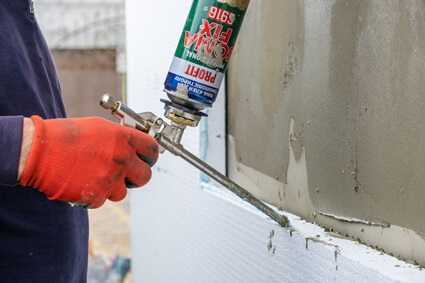
Is Expanding Foam Toxic to Rats?
Dry spray foam is chemically inert and contains no active toxins that can harm rats, even when ingested. Since the foam is essentially a form of plastic, the rat will only experience mild digestive issues.
However, expanding foam that isn’t yet dry is highly toxic. It contains VOCs, isocyanates, phenol-formaldehyde, and other active toxic chemicals before it’s dry. Exposure in humans can lead to respiratory issues, skin rashes, and nasal and eye irritation.
Rats might be more resistant to these effects, but they can still be impacted. For this reason, most are likely to give wet spray foam a wide berth.
Rats are intelligent and good judges of what’s safe to eat and what’s toxic, even for their iron stomachs. That’s why rat traps, rodenticides, and other pest-control methods often include food bait or add scents that mimic the smell of bait, tricking rats into eating what they would otherwise spot as dangerous.
Since expanding foam isn’t designed to attract rats, it’ll likely be treated cautiously while still wet. After it dries and the fumes and intensity of the chemical smell dissipate, a rat may be better tempted to give it a nibble. At this point, the only danger is impaction, not poisoning.
An exception comes with foam used as insulation in place of fiberglass and similar materials.
Many brands coat this foam in pesticides to discourage rodents, bugs, and other pests from eating or setting up nests in the insulation. This type of foam can be toxic to rats and may drive them off wholesale, depending on the brand and how it’s applied.
Best Expanding Foam for Rats
At the time of writing, there are two popular and favored types of spray foam: polyurethane and latex-based spray foams.
The former is more rigid and becomes firm (rather than spongy) when dry, making it easier to sculpt. On the other hand, latex foam is water-absorbent and takes on a spongy consistency when cured.
Harder foams may appeal to rats, but the stronger the chemical smell, the better. The firm consistency will make it tempting for rats to gnaw on it, but the powerful synthetic odor will be unappealing.
In contrast, latex-based foam is easy for rats to chew through and easier to digest, but the soft consistency may be off-putting for rats.
In light of that, either type works equally as well; it merely depends on your budget, the best foam choice for your insulation or repair needs, and your infestation concerns.
If a choice had to be made, polyurethane foam might be ideal if you keep a close eye on any rat presence. It’ll take longer to gnaw through this harder foam, which may allow you to apply pest-control measures before the rats access your home.
In any case, this measure should always be paired with better rat prevention and deterrent means.
For example, any expanding foam mixed with pesticides will be ideal. However, this foam is often exclusive to pest control companies, and you will need a professional to utilize it in your home. This raises the cost of the foam, but it can also give better results in keeping your home rat-free.

